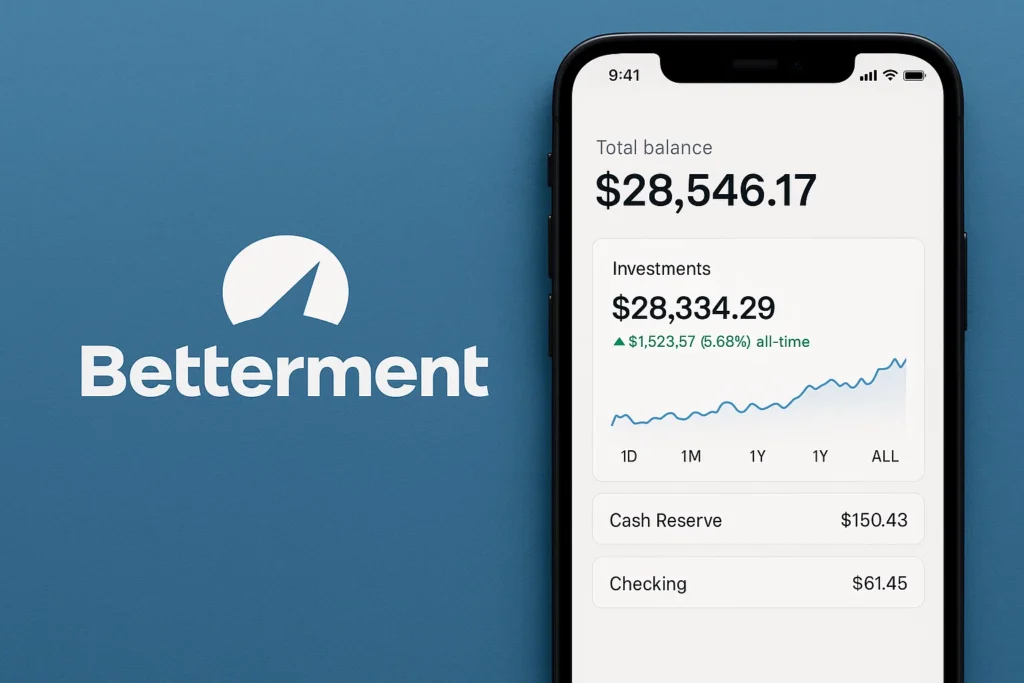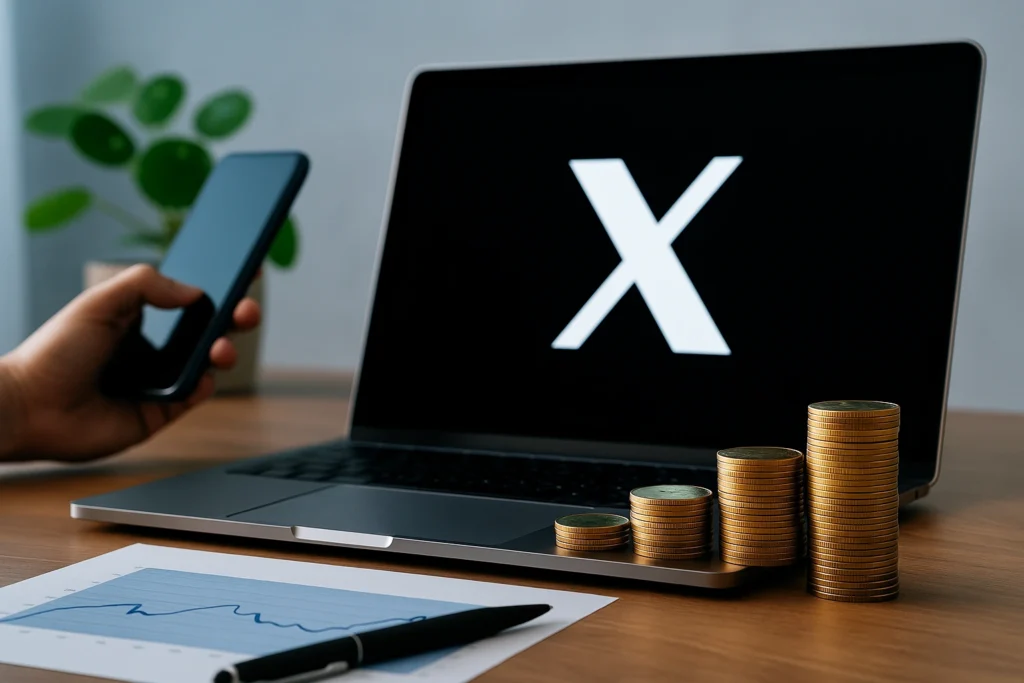Picture this: you open your wardrobe, pull out clothes you no longer wear, and with a few taps turn them into cash or credit. Meanwhile someone else finds a high-quality brand piece at 70 % off retail and loves the find. That’s the world of the online resale marketplace where ThredUp lives — solving two big problems in one go: excess clothing and affordable style.
ThredUp was founded in 2009 in Oakland, California, by James Reinhart, Chris Homer and Oliver Lubin. Their vision: reshape fashion by treating second-hand garments not as a liability but as an asset. Fast forward to 2025: ThredUp is one of the largest online resale platforms in the U.S., active in apparel/shoes/accessories, and publishing major industry reports showing how the “second-hand first” mindset is accelerating.
With the second-hand apparel market globally expected to hit about US$367 billion by 2029 and the U.S. segment growing at a strong rate, ThredUp’s timing and model are highly relevant.
What is ThredUp? — The Simple Explanation
ThredUp is an online consignment and thrift platform that allows people to buy and sell second-hand clothing, shoes, and accessories through a fully managed process. Sellers simply order a “Clean Out Kit,” fill it with unwanted clothes, and ship it to ThredUp. The company then handles sorting, photographing, listing, pricing, and shipping to buyers.
Core Problem It Solves
ThredUp tackles two major issues — the waste generated by fast fashion and the high cost of quality clothing. By giving clothes a second life, it promotes circular fashion while making top brands more accessible to consumers.
Target Users & Use Cases
- Sellers: Individuals who want to declutter closets and earn money or shopping credit easily.
- Buyers: Bargain-hunters and eco-conscious shoppers seeking discounted, high-quality apparel.
- Brands & Retailers: Companies that partner with ThredUp to offer resale programs or sustainability initiatives.
Market Position (2025 Snapshot)
- Over 2 million unique sellers have used ThredUp.
- More than 100 million items processed to date.
- Partners include Banana Republic, Abercrombie & Fitch, and PacSun for branded resale programs.
- The U.S. resale market is projected to grow by nearly 80 % by 2028, giving ThredUp a leading edge.
Read more: Complete Guide to Starting an E-commerce App Business
Why It Became Successful
ThredUp’s success comes from convenience. Instead of peer-to-peer haggling like eBay or Poshmark, it offers a managed resale experience — sellers simply ship items, and ThredUp does the rest. This “hands-off” approach appeals to busy users who still want to participate in sustainable fashion.
How Does ThredUp Work? Step-by-Step Breakdown
For Users (Buyers and Sellers)
1. Account Creation Process
Users create a free ThredUp account via the website or mobile app. Basic details (email, address, preferences) are added, and users can immediately start shopping or order a “Clean Out Kit.”
2. Selling Flow
- Request a Clean Out Kit (pre-paid bag or label).
- Fill it with gently used clothing and ship it to ThredUp’s automated processing center.
- ThredUp inspects, photographs, and lists eligible items for sale.
- When items sell, sellers receive payment (via PayPal, credit, or ThredUp shopping credit).
3. Buying Journey Example
A buyer searches “Levi’s Denim Jacket.” They see filters for size, condition, brand, and price. They add items to cart, checkout securely, and get items shipped within a few days directly from ThredUp’s warehouse. Every product is quality-checked to ensure condition matches the listing.
4. Key Functionalities Explained
- Smart Filters: AI sorting for brand, condition, and style.
- Virtual Closet: Save favorite items and track price drops.
- Rescue Box: Buy mystery bundles of unsold items at deep discounts.
- Rewards Program: Earn points for buying and selling sustainably.
For Service Providers (Consignment Partners & Brands)
1. Onboarding Process
Brands and retailers join ThredUp’s Resale-as-a-Service (RaaS) program. They receive a customized resale page integrated into their own storefront (e.g., Abercrombie x ThredUp Resale Shop).
2. How They Operate on Platform
ThredUp handles inventory, logistics, and customer support for partners. Brands can promote “circular fashion” without building the tech infrastructure themselves.
3. Earnings / Commission Structure
- Sellers earn a percentage (5 %–80 %) based on item price tier.
- ThredUp takes a commission for processing, listing, and fulfillment.
- Brand partners receive a cut for every sale made through their resale shop.
Technical Overview (Simple View)
Architecture & Flow:
- Frontend (UI): React + Next.js web app, Flutter-based mobile apps.
- Backend: Python (Django/Flask) microservices with AWS Lambda for scaling.
- Database: PostgreSQL for core data, Elasticsearch for search & filtering.
- AI/ML Models: Used for automated item classification, pricing prediction, and photo tagging.
- Payments: Stripe and PayPal integration for seamless transactions.

ThredUp’s Business Model Explained
ThredUp operates on a hybrid consignment + managed marketplace model, blending resale convenience for users with a strong backend logistics and pricing engine.
How ThredUp Makes Money
- Consignment Commissions:
ThredUp takes a percentage of every item sold. Sellers’ payout varies between 5 % and 80 % depending on brand, category, and resale price. - Upfront Payouts:
For select items, sellers receive an instant payout before resale — ThredUp later earns the full sale value once the item sells. - Rescue Box Sales:
Bundled unsold items are offered at deep discounts (e.g., $30 for 10 items), creating additional revenue from leftover inventory. - RaaS – Resale-as-a-Service:
ThredUp partners with major brands like Gap, Adidas, and Madewell, providing the tech, logistics, and resale infrastructure for branded thrift stores. Brands pay for integration, logistics, and profit-sharing on each sale. - Shipping & Handling Fees:
Buyers pay shipping on most orders, contributing an additional margin stream. - Platform Promotions & Credit Programs:
ThredUp monetizes brand visibility, credits, and reward integrations through affiliate or in-app placement fees.
Pricing & Commission Breakdown
| Item Resale Price | Seller Payout | ThredUp Commission |
| $5 – $19.99 | 5 % – 15 % | 85 % – 95 % |
| $20 – $49.99 | 20 % – 40 % | 60 % – 80 % |
| $50 – $99.99 | 50 % | 50 % |
| $100 – $199.99 | 60 % – 70 % | 30 % – 40 % |
| $200 + premium | 80 % | 20 % |
Market Size & Growth (2025)
- Global resale market: projected ≈ $367 billion by 2029
- U.S. second-hand apparel market: ≈ $43 billion (2025), CAGR > 15 %
- ThredUp valuation: ≈ $900 million (mid-2025 public market cap)
- Average order value (AOV): $55–$60
- Gross margin: ≈ 70 % thanks to automation and bulk logistics
Profit Margins Insights
Automation in inventory sorting and AI-based pricing enables ThredUp to keep logistics lean and margins high. Its RaaS partnerships diversify revenue beyond resale, giving a B2B stability layer in addition to consumer sales.
Key Features That Make ThredUp Successful
ThredUp isn’t just another resale app — it’s a tech-driven sustainability platform. Its success lies in combining automation, trust, and convenience through a polished UX and smart backend.
Top 10 Features Analysis
- Clean Out Kit System
- Why it matters: Simplifies selling; no need for photos or listings.
- Benefit: Time-saving for users.
- Innovation: Automated inventory barcoding and AI-driven pricing.
- AI-Powered Pricing Engine
- Why it matters: Determines optimal resale value instantly.
- Benefit: Sellers maximize payout, buyers get fair prices.
- Innovation: Uses machine learning from millions of listings.
- Smart Categorization & Tagging
- Why it matters: Ensures accurate listings and easy browsing.
- Benefit: Enhances buyer trust and product discovery.
- Innovation: Computer vision models analyze photos for brand, color, and condition.
- Resale-as-a-Service (RaaS)
- Why it matters: Lets top brands launch branded thrift shops via ThredUp’s API.
- Benefit: Expands the resale ecosystem.
- Innovation: Whitelabel resale platform architecture.
- Virtual Closet & Wishlist
- Why it matters: Personalizes shopping.
- Benefit: Increases user retention and repeat purchases.
- Innovation: Uses AI to suggest similar or complementary products.
- Rescue Boxes
- Why it matters: Prevents waste from unsold items.
- Benefit: Eco-conscious buyers get huge deals.
- Innovation: Dynamic bundling algorithm to clear inventory efficiently.
- Sustainability Dashboard
- Why it matters: Shows each user’s environmental impact.
- Benefit: Encourages loyalty through social responsibility.
- Innovation: Real-time carbon and water savings tracking.
- Mobile App Experience (2025 Update)
- Why it matters: 70 % of purchases now happen via mobile.
- Benefit: Seamless shopping, notifications, and resale tracking.
- Innovation: Flutter-based hybrid app with predictive UI.
- Brand Partnerships Integration
- Why it matters: Brings trust and exposure from known retailers.
- Benefit: Strengthens both ThredUp and partner brand ecosystems.
- Innovation: API-driven brand microsites hosted under ThredUp’s domain.
- AI Chat & Smart Search (2025 Rollout)
- Why it matters: Natural language search like “find me a red floral dress under $40.”
- Benefit: Eases product discovery and boosts conversion.
- Innovation: GPT-powered search and recommendation assistant.
Recent 2025 Updates
- Enhanced photo recognition AI for faster product verification.
- Sustainable Packaging 2.0 — 100 % recycled mailers.
- Smart Wardrobe Analytics showing resale potential of owned clothing.
- ThredUp x Gap RaaS Expansion in over 500 store integrations.
AI/ML Integrations
- Predictive pricing models
- Visual defect detection
- Personalized sustainability metrics
- Auto-suggested listings for sellers

The Technology Behind ThredUp
ThredUp’s success isn’t only about fashion — it’s a fusion of data science, automation, and scalable cloud architecture designed to handle millions of items with minimal human touch.
Tech Stack Overview (Simplified)
| Layer | Technologies Used | Purpose |
| Frontend | React.js, Next.js, Flutter | Responsive, cross-platform user interface |
| Backend | Python (Django, FastAPI), Node.js microservices | Business logic, order management, API communication |
| Database | PostgreSQL, Redis cache, Elasticsearch | Product catalog, user data, and high-speed search |
| Cloud Infrastructure | AWS (S3, EC2, Lambda), Kubernetes | Scalable and fault-tolerant deployment |
| AI/ML Stack | TensorFlow, PyTorch, OpenAI GPT API | Image recognition, pricing models, NLP search |
| Payments & Security | Stripe, PayPal SDK, Plaid | Secure transactions and payout processing |
Real-Time Features Explained
- Inventory Sync: Automatic update when an item sells or is marked unavailable.
- Dynamic Pricing: AI continuously adjusts prices based on market demand.
- Smart Notifications: Real-time alerts for restocks, price drops, and wishlist items.
Data Handling & Privacy
ThredUp complies with CCPA and GDPR standards, anonymizing user data and encrypting sensitive transactions. Data pipelines process millions of product images daily while maintaining strict retention and deletion policies.
Scalability Approach
The platform is built with serverless microservices and event-driven architecture — ideal for fluctuating traffic (sales surges, seasonal peaks). Automated scaling keeps load times below two seconds even during 10× volume spikes.
Mobile App vs Web Platform
- Mobile App: Designed with a Flutter framework for uniform Android and iOS experience, faster updates, and offline browsing.
- Web Platform: Optimized with Next.js for SEO and high conversion; integrated directly into partner brand websites via embedded resale widgets.
API Integrations
- Partner API (RaaS): Enables brands to launch resale programs under their domain.
- Shipping APIs: Integration with FedEx and USPS for label automation.
- AI Analytics API: Monitors trends and sustainability impact for each user profile.
Why This Tech Matters for Business
This robust architecture allows ThredUp to process over 100 million items, handle millions of concurrent users, and maintain high operational margins — all while promoting sustainability at scale.
ThredUp’s Impact & Market Opportunity
ThredUp isn’t just a resale platform — it’s a catalyst for change in the global fashion industry. Its influence spans consumer behavior, brand sustainability, and environmental responsibility.
Industry Disruption
The traditional fashion industry produces over 92 million tons of textile waste annually. ThredUp’s circular model challenges this by giving clothing multiple lifecycles. Its operations represent a massive shift toward recommerce — the act of reselling goods that were once destined for landfills.
ThredUp’s Resale-as-a-Service (RaaS) platform is now used by dozens of top brands like Gap, H&M, Adidas, and American Eagle, allowing them to run secondhand programs powered entirely by ThredUp’s logistics and technology.
Market Statistics & Growth
- Global Resale Market: Projected to reach $367 billion by 2029, growing 3× faster than the retail apparel sector.
- U.S. Secondhand Market (2025): Worth over $43 billion, growing at a CAGR of 15–18 %.
- ThredUp Processed Items: Over 100 million+ items listed, with a new item uploaded every second.
- Environmental Impact: ThredUp reports saving 1 billion pounds of CO₂ and 3 billion gallons of water through resale initiatives (2025 Impact Report).
User Demographics & Behavior
- Primary audience: Women aged 25–45 (millennial & Gen Z overlap).
- Top product categories: Women’s apparel (70 %), kidswear (15 %), accessories (10 %).
- Shopping habits: 60 % of users prefer ThredUp for “sustainable first” fashion choices.
- Retention rate: Over 50 % of users make repeat purchases within six months.
Geographic Presence
ThredUp operates primarily in the United States, with growing resale infrastructure in Canada, the U.K., and select EU markets. The company plans to expand its RaaS partnerships globally by licensing its API stack to European and Asian retailers in 2025–2026.
Future Projections
- AI resale predictions will help forecast item value based on brand trends.
- Expansion into kidswear, maternity, and luxury resale niches.
- Collaboration with eco-packaging startups to make logistics carbon-neutral.
- Integration of blockchain-based garment tracking for authenticity verification.
Opportunities for Entrepreneurs
The circular fashion economy is booming. Entrepreneurs can now enter this space with:
- Niche resale platforms (e.g., vintage, streetwear, baby clothes).
- RaaS-inspired clones to empower local brands with resale capability.
- Eco-focused fashion marketplaces powered by AI and automation.
This massive success is why many entrepreneurs want to create similar platforms — efficient, sustainable, and profitable resale ecosystems.
Building Your Own ThredUp-Like Platform
Launching a platform like ThredUp today means entering one of the fastest-growing digital commerce categories — circular fashion and recommerce. The key is blending automation, AI, and sustainability into a seamless user experience that feels effortless for both sellers and buyers.
Why Businesses Want ThredUp Clones
- Proven Market Demand: Sustainable shopping is no longer a trend; it’s a $300B+ global movement.
- Low Entry Barrier: With ready-made tech solutions, entrepreneurs can launch quickly.
- Brand Partnerships: Local fashion retailers increasingly seek resale integrations.
- Recurring Revenue: Commissions, logistics, and affiliate programs offer stable income.
Key Considerations for Development
- Smart Inventory Processing: AI-based item recognition and automated pricing.
- Sustainability Dashboard: Gamify eco-impact to increase user retention.
- Mobile-First UX: Prioritize Flutter or React Native apps for dual-OS scalability.
- Multi-Vendor Backend: Allow individual sellers and brand stores to coexist.
- Automated Logistics: Built-in shipping APIs for easy label generation.
- AI Recommendation Engine: Suggest related products and optimize conversions.
Time & Cost Factors
- Development Duration: 7 – 14 days with Miracuves’ ready-made ThredUp-style clone framework.
- Estimated Go-Live Cost: $2,999 – $3,499, depending on customization and integrations.
- Scalability: Fully cloud-hosted architecture to handle 1 M+ listings easily.
Essential Features to Include
- Clean-Out Kit Request & Tracking
- Automated Quality Control Dashboard
- RaaS (Resale-as-a-Service) Brand Module
- AI Pricing Engine
- Eco Impact Tracker
- Seller Wallet & Payout Automation
- Multi-Currency Payment Gateway
Read more: How to Market an e-commerce app Successfully After Launch
Conclusion
ThredUp’s journey proves that technology and sustainability can coexist profitably. What started as a simple idea — giving pre-loved clothes a second life — has evolved into a global force reshaping the fashion industry. By blending AI automation, resale logistics, and consumer trust, ThredUp has transformed how millions shop and think about fashion waste.
As the world embraces circular commerce in 2025 and beyond, the opportunity for entrepreneurs is enormous. Building a ThredUp-like platform today means stepping into a booming $300-billion-plus market driven by eco-conscious consumers and scalable technology.
Ready to build your own ThredUp-like resale platform? Launch your sustainable marketplace in just 3-6 days with Miracuves. Contact Us Now to get a free demo and pricing.
FAQs
Q:1 How does ThredUp make money?
ThredUp earns revenue through consignment commissions (5 – 80 %), branded resale partnerships via its Resale-as-a-Service (RaaS) model, shipping fees, and selling unsold inventory through Rescue Boxes.
Q:2 Is ThredUp available in my country?
As of 2025, ThredUp operates primarily in the United States, with limited international reach to Canada, the U.K., and the EU through brand collaborations.
Q:3 How much does ThredUp charge users?
Buyers typically pay a small shipping fee (around $5 – $8) and product price. Sellers receive a commission-based payout, with ThredUp retaining a service fee per item sold.
Q:4 What’s the commission for service providers or sellers?
Commissions vary by item value — generally ThredUp keeps 20 – 95 %, while high-value or premium items may return up to 80 % payout to sellers.
Q:5 How does ThredUp ensure safety and authenticity?
Every item undergoes quality inspection at ThredUp’s processing centers. AI tools check for brand authenticity, defects, and condition before listings go live.
Q:6 Can I build something similar to ThredUp?
Yes. With Miracuves’ ThredUp-style clone solution, you can launch your own recommerce or fashion-resale platform in 3-6 days, complete with AI pricing, clean-out kit workflows, and brand integration.
Q:7 What makes ThredUp different from competitors?
Unlike peer-to-peer resale apps (e.g., Poshmark), ThredUp offers a fully managed consignment model — sellers ship items once and the platform handles everything else.
Q:8 How many users does ThredUp have?
As of 2025, ThredUp has over 2 million active sellers and tens of millions of registered buyers across its ecosystem.
Q:9 What technology does ThredUp use?
ThredUp uses Python/Django, React, and AWS for its core platform, plus AI/ML models built on TensorFlow and PyTorch for product recognition and pricing.
Q:10 How can I create an app like ThredUp?
Partner with Miracuves — specialists in building resale and marketplace clone apps. You can get your ThredUp-like platform live in under two weeks with complete backend, mobile app, and admin dashboard support.
Related Articles:







